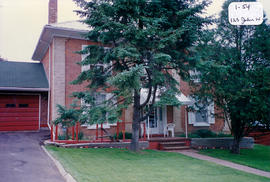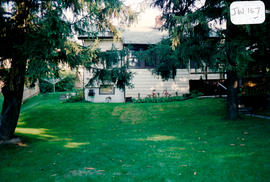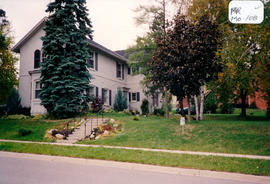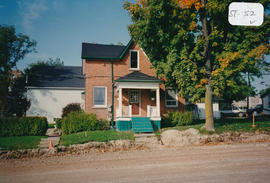123 John Street West - The Former Presbyterian Manse
- CA BWGPL GJ-HB-2017-04-06-03
- Item
- 1996
Parte de George Jackson fonds
The former Presbyterian Manse is located at 123 John St. West (on the northeast corner of John and Essa Streets). It was built around 1880 in the Eclectic Neoclassical style. Presbyterian ministers lived here in the 1920-1930’s. Rev. McLaren and his wife and daughter lived here in the 1930’s. Jim and Aida Catania later lived here for a number of years. They were followed by Bill Nesbitt and his family after World War II.
The two-storey, rectangular building has a symmetrical façade, a centre hall plan, and a wide entrance with sidelights and a transom. Large window openings with high floor to ceiling heights and the large, 6/6 sash windows (with painted, wood lug sills and shutters) are all Neoclassical features. The monumental pilasters with stepped-brick, stylized bases and capitals, and elaborate, wood soffit detail that accentuate the pilaster capital are Classic Revival features. A medium-pitched, hip roof with a wide overhang and the original veranda (demolished) which extended across the full width of the front façade are Regency Revival features. Dichromatic brickwork at the pilasters is a Gothic Revival feature. The house has solid-brick construction (Flemish bond pattern), a brick foundation, and metal roof cladding. According to the 2000 inventory, the metal awning, the metal screen door at the entrance, and the garage addition are unsympathetic with the original building. It also notes that the façade is unique and handsome. (1, 2, 3)
Sem título










